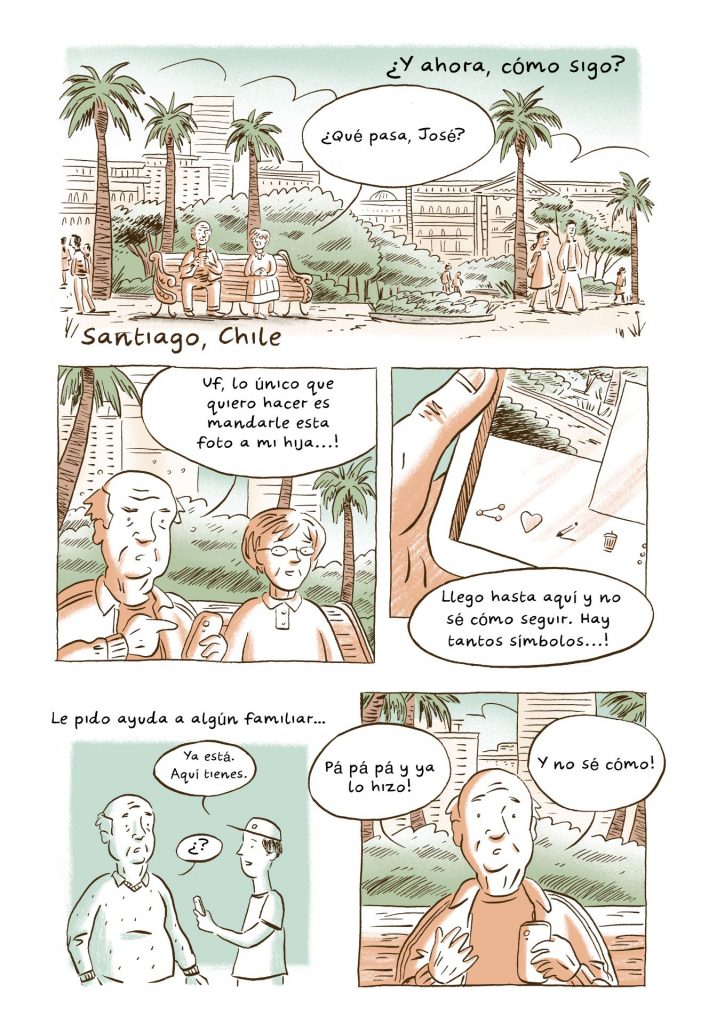Illustrating ASSA’s findings with comics – part 3
By Georgiana Murariu, on 18 August 2021
By Georgiana Murariu & Laura Haapio-Kirk
In this blog post, we present the third comic in our ASSA comics series – this time set in Lusozi, a neighbourhood in Kampala, the capital of Uganda. Researcher Charlotte Hawkins conducted fieldwork here for 16 months on the intersection of ageing and smartphone use. In order to do this, Charlotte took part in participation in community activities such as women’s groups and savings groups, including a group called ‘Togetherness is Strength’, which is also the title of this comic.
Here, we see how a community comes together to save money for smartphones through a rotation savings group, common in Kampala. Groups such as these are increasingly communicating via WhatsApp but in this particular fieldsite, not everyone has a smartphone. The savings group wanted to ensure every member had a smartphone so they were able to communicate via WhatsApp. When this issue is discussed at a meeting, we see how group members facilitate individuals’ access to smartphones through cooperation, in a way that is aligned with the ‘smart-from-below’ approach that is characteristic of so many of the research participants in this project.
Because not everyone will be acquainted with the way a rotating savings group works, in this comic we aimed for a balance between descriptive text and narrative visuals, such as the panels showing the celebration and funeral to indicate what money collected through these savings groups can often be used for. Membership of groups such as ‘Togetherness is strength’ goes beyond financial and economic benefits, however, giving younger generations in Lusozi an opportunity to sit with their elders and learn from them, as they would have more regularly in the past. At the beginning of scripting we played with the idea of including this element in the comic, however, after advice from our collaborator, artist John Cei Douglas, we decided to focus on one distinct event which Charlotte had observed during fieldwork – the coming together to help various members buy a smartphone.
Although we were equipped with photographs and short films from the Ugandan fieldsite as references, it is not always easy to transform complex stories from someone else’s research into a short comic that will be read in seconds. During the rough draft stage of the comic, we worked together with Charlotte to gather feedback on elements like the characters’ outfits, the setting (we had to think about ways of quickly conveying who is ‘running’ the meeting), and the dialogue between the characters, which had been adapted from her fieldnotes. Some phrases that we initially included in the script were slightly changed following a few rounds of feedback. Although the comics are a creative interpretation of the research findings, in condensing real-life dialogue, we did not want to depart too much from what the characters in the fieldsite would actually say. This very helpful guide to collaborations between artists and humanities researchers explains in further depth the processes involved in such endeavours.
After the script was improved based on Charlotte’s feedback, we also received notes from John, who, through a series of questions, asked us for specific details we hadn’t thought to include, such as how many characters are in the savings group itself and how we’d like the chairman/vice-chairman of the meeting to be differentiated. We eventually solved this visually through the addition of a clipboard. John also suggested we needed a stronger conclusion. We settled on showing how one of the members of the group continues to benefit from the smartphone acquired through the savings group many weeks later – in the last panel, he is shown helping his daughter with her homework by googling something. John has been instrumental in helping us figure out how to build the ‘flow’ of the comics and how to assemble different moments that, taken together, ensure that the message of the research is understood. As Dr Alpa Shah, associate professor of anthropology at King’s College London describes in this blog post, transforming anecdotes, research notes, and findings into comic-style illustrations can be a bit like translating something into a different language!
For us, the process consisted of a draft script on Google Docs shared between Georgiana and Laura, Charlotte, the researcher, and John the artist. In the end, we strove to achieve a common vision, that told a particular story from Charlotte’s research in a way that would work for this particular format. We hope we have got the balance right!


 Close
Close








